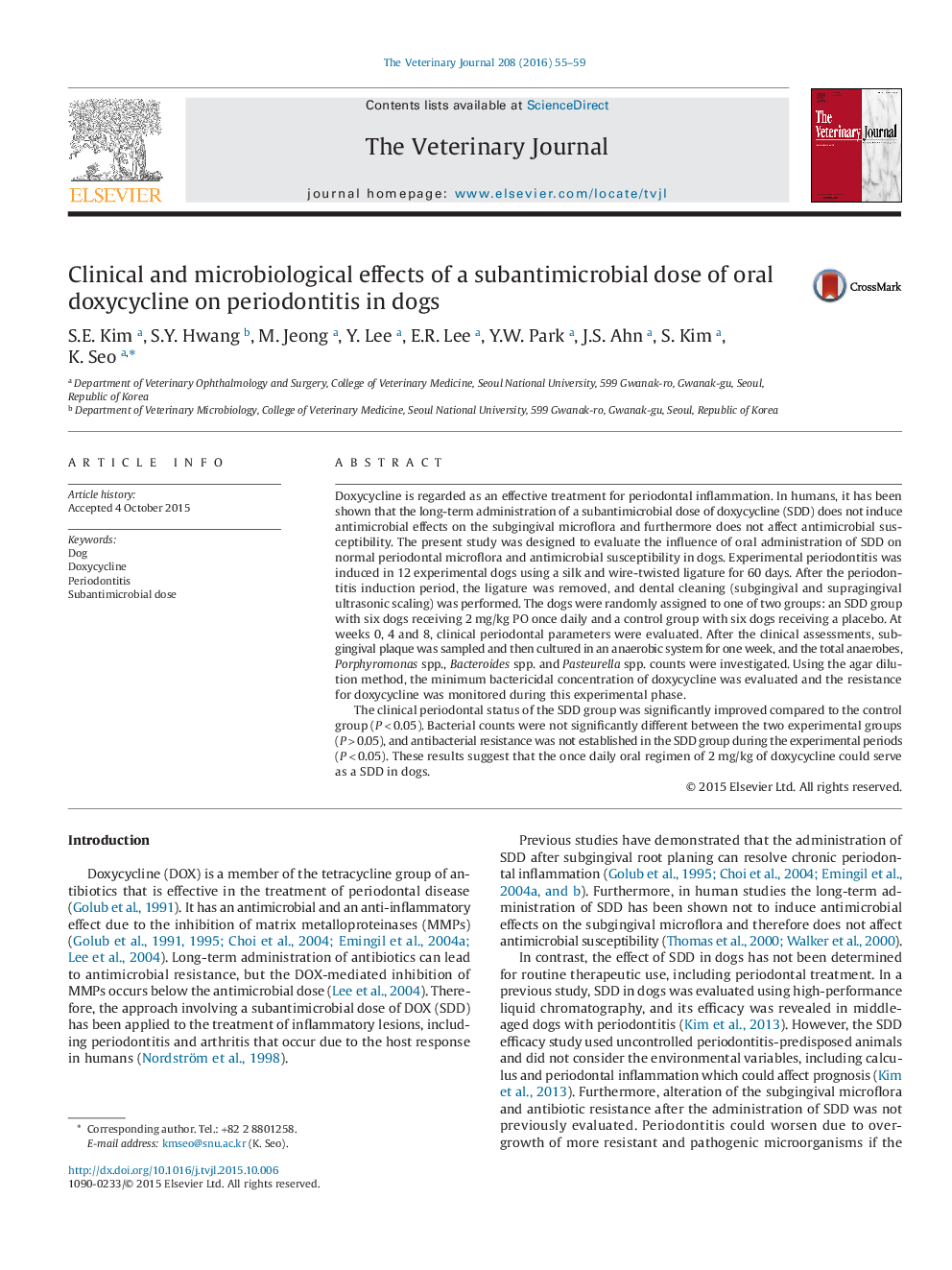| Article ID | Journal | Published Year | Pages | File Type |
|---|---|---|---|---|
| 2463751 | The Veterinary Journal | 2016 | 5 Pages |
•The clinical effect of a subantimicrobial dose of doxycycline (SDD) in dogs was evaluated.•SDD administration for 2 months reduced clinical periodontal parameters.•Oral SDD did not affect the distribution of subgingival anaerobes for 2 months.•Oral SDD did not alter the antimicrobial susceptibility of subgingival anaerobes.•A once daily oral administration of 2 mg/kg doxycycline could serve as an effective subantimicrobial dose in dogs.
Doxycycline is regarded as an effective treatment for periodontal inflammation. In humans, it has been shown that the long-term administration of a subantimicrobial dose of doxycycline (SDD) does not induce antimicrobial effects on the subgingival microflora and furthermore does not affect antimicrobial susceptibility. The present study was designed to evaluate the influence of oral administration of SDD on normal periodontal microflora and antimicrobial susceptibility in dogs. Experimental periodontitis was induced in 12 experimental dogs using a silk and wire-twisted ligature for 60 days. After the periodontitis induction period, the ligature was removed, and dental cleaning (subgingival and supragingival ultrasonic scaling) was performed. The dogs were randomly assigned to one of two groups: an SDD group with six dogs receiving 2 mg/kg PO once daily and a control group with six dogs receiving a placebo. At weeks 0, 4 and 8, clinical periodontal parameters were evaluated. After the clinical assessments, subgingival plaque was sampled and then cultured in an anaerobic system for one week, and the total anaerobes, Porphyromonas spp., Bacteroides spp. and Pasteurella spp. counts were investigated. Using the agar dilution method, the minimum bactericidal concentration of doxycycline was evaluated and the resistance for doxycycline was monitored during this experimental phase.The clinical periodontal status of the SDD group was significantly improved compared to the control group (P < 0.05). Bacterial counts were not significantly different between the two experimental groups (P > 0.05), and antibacterial resistance was not established in the SDD group during the experimental periods (P < 0.05). These results suggest that the once daily oral regimen of 2 mg/kg of doxycycline could serve as a SDD in dogs.
